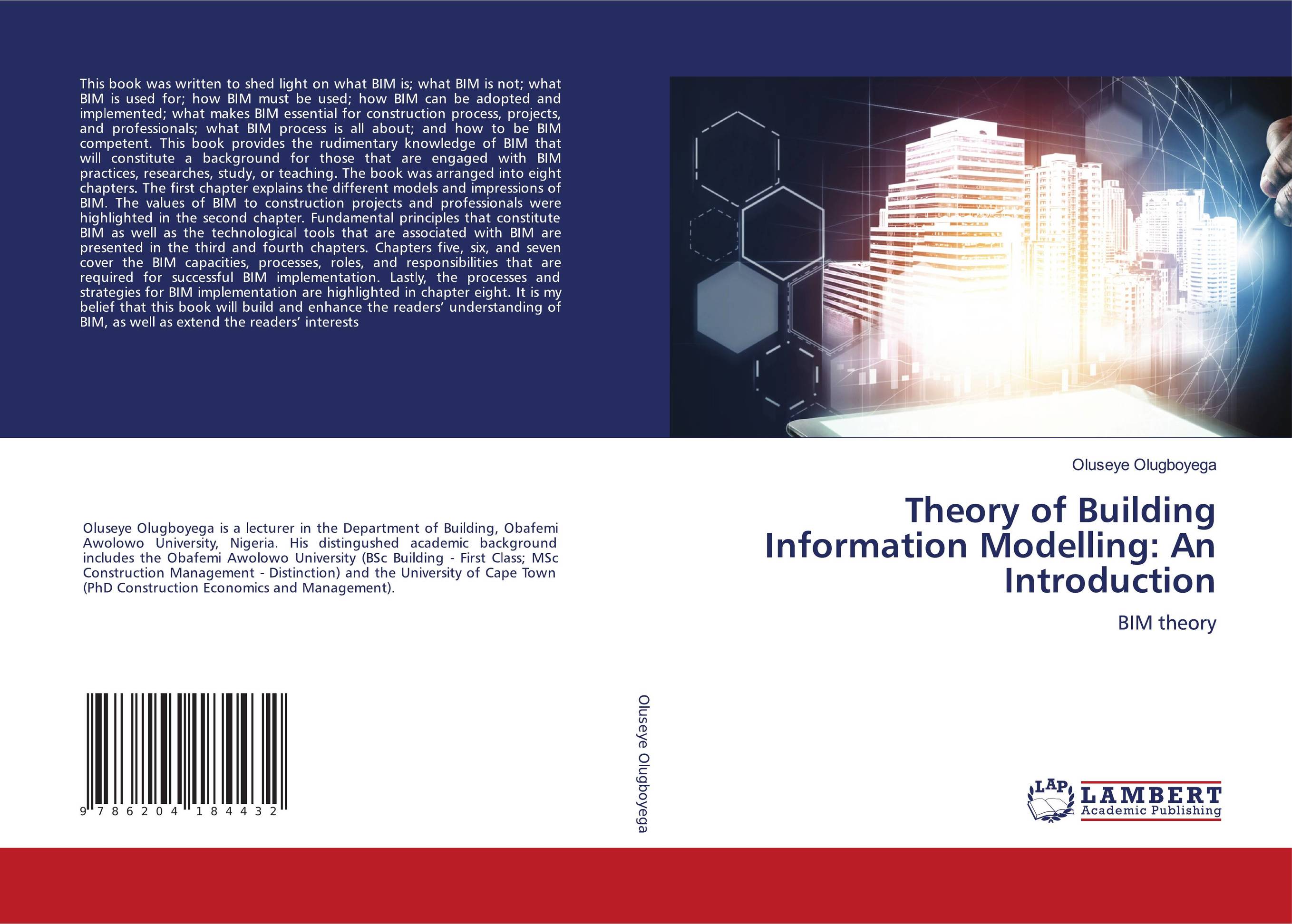| Поиск по каталогу |
|
(строгое соответствие)
|
- Профессиональная
- Научно-популярная
- Художественная
- Публицистика
- Детская
- Искусство
- Хобби, семья, дом
- Спорт
- Путеводители
- Блокноты, тетради, открытки
Theory of Building Information Modelling: An Introduction. BIM theory

В наличии
| Местонахождение: Алматы | Состояние экземпляра: новый |

Бумажная
версия
версия
Автор: Oluseye Olugboyega
ISBN: 9786204184432
Год издания: 1905
Формат книги: 60×90/16 (145×215 мм)
Количество страниц: 192
Издательство: LAP LAMBERT Academic Publishing
Цена: 43386 тг
Положить в корзину
| Способы доставки в город Алматы * комплектация (срок до отгрузки) не более 2 рабочих дней |
| Самовывоз из города Алматы (пункты самовывоза партнёра CDEK) |
| Курьерская доставка CDEK из города Москва |
| Доставка Почтой России из города Москва |
Аннотация: This book was written to shed light on what BIM is; what BIM is not; what BIM is used for; how BIM must be used; how BIM can be adopted and implemented; what makes BIM essential for construction process, projects, and professionals; what BIM process is all about; and how to be BIM competent. This book provides the rudimentary knowledge of BIM that will constitute a background for those that are engaged with BIM practices, researches, study, or teaching. The book was arranged into eight chapters. The first chapter explains the different models and impressions of BIM. The values of BIM to construction projects and professionals were highlighted in the second chapter. Fundamental principles that constitute BIM as well as the technological tools that are associated with BIM are presented in the third and fourth chapters. Chapters five, six, and seven cover the BIM capacities, processes, roles, and responsibilities that are required for successful BIM implementation. Lastly, the processes and strategies for BIM implementation are highlighted in chapter eight. It is my belief that this book will build and enhance the readers’ understanding of BIM, as well as extend the readers’ interests
Ключевые слова: BIM, BIM adoption, BIM implementation, BIM concept, BIM application, BIM definition



